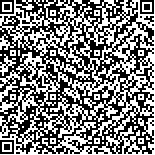| Related citation: | CaoWei,WeiYingJie,WangCong,YuKaiPing,HuangWenHu.Study on the trajectory prediction curves of supercavitating vehicle[J].Journal of Harbin Institute Of Technology(New Series),2009,16(6):815-820.DOI:10.11916/j.issn.1005-9113.2009.06.014. |
|
| Author Name | Affiliation | | CaoWei | School of Astronautics, Harbin Institute of Technology, Harbin 150001, China | | WeiYingJie | School of Astronautics, Harbin Institute of Technology, Harbin 150001, China | | WangCong | School of Astronautics, Harbin Institute of Technology, Harbin 150001, China | | YuKaiPing | School of Astronautics, Harbin Institute of Technology, Harbin 150001, China | | HuangWenHu | School of Astronautics, Harbin Institute of Technology, Harbin 150001, China |
|
| Abstract: |
| In order to understand the laws of motion for supercavitating vehicle better, simplified equations for longitudinal motion of supercavitating vehicle were derived. Then the corresponding simulation software for trajectory of supercavitating vehicle was programmed, by which the theoretical predicted trajectories of the supercavitating vehicle at different velocities were obtained. It was found that the predicted trajectories at low speed and without cavitation on the vehicle in theory agreed well with those in experiments, and the theoretical predicted trajectories at high speed and with supercavity on the vehicle correctly reflected the motion laws of the supercavitating vehicle. The influences of various parameters of cavitator and rudder on the underwater trajectory were compared and analyzed, which can provide a guide for the design of hydrodynamic distribution and gross parameters of the supercavitating weapons. |
| Key words: hydrodynamic forces supercavitation trajectory theoretical prediction |
| DOI:10.11916/j.issn.1005-9113.2009.06.014 |
| Clc Number:O358 |
| Fund: |






